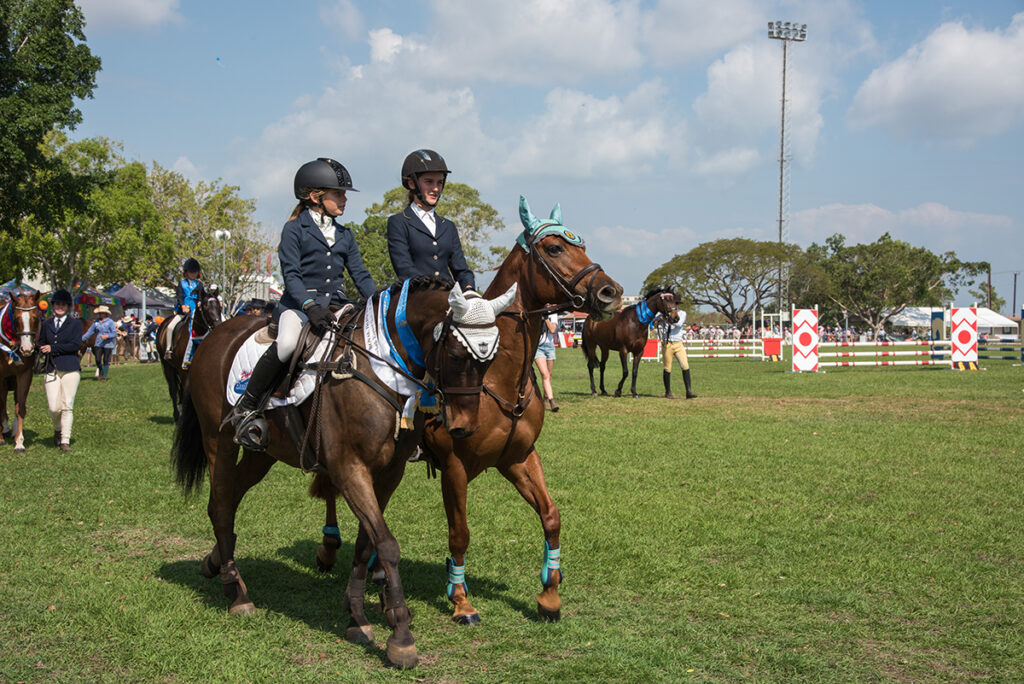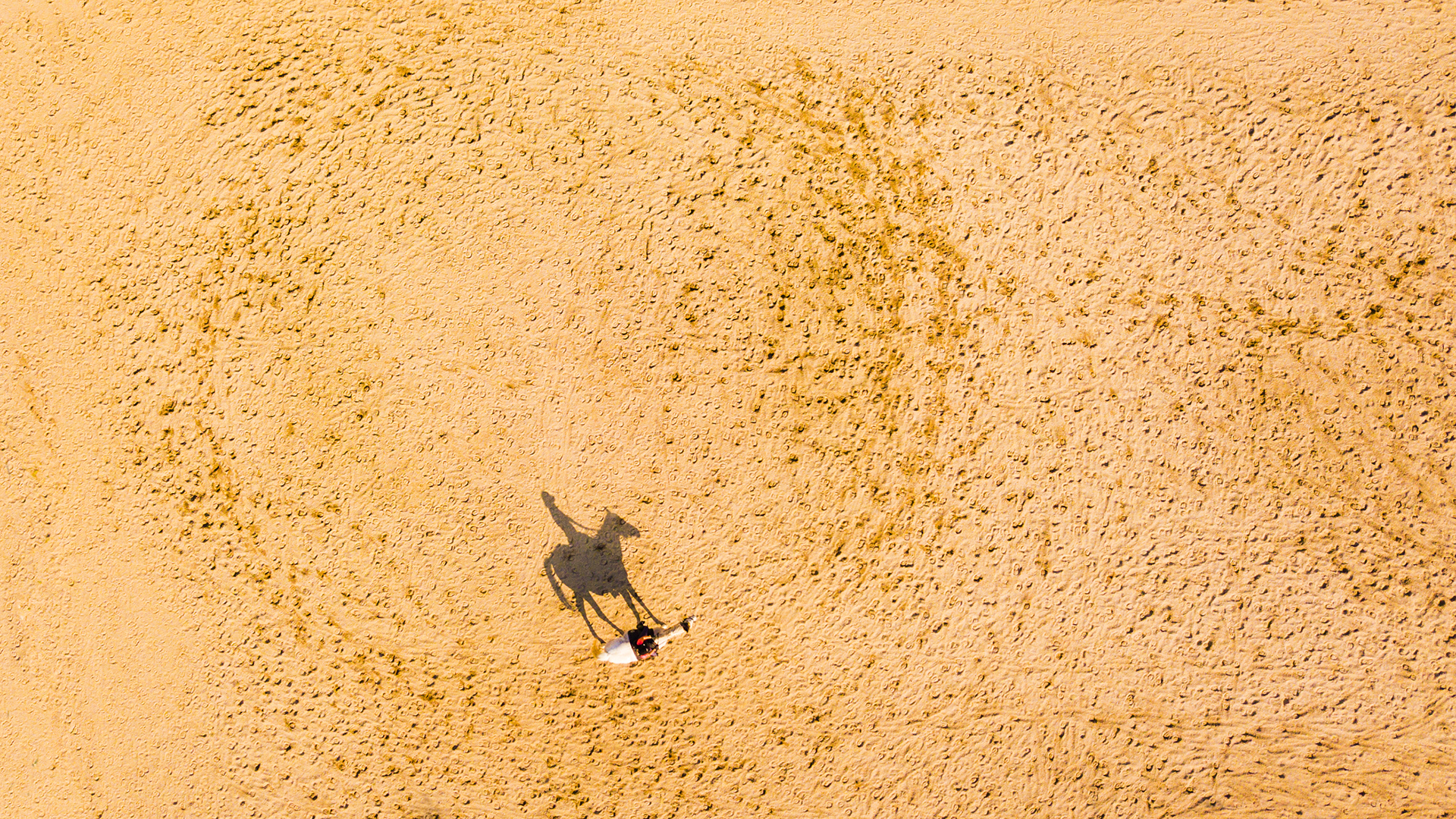Equestrian Australia needs to clearly spell out its vision, costs and course of action for its takeover of state and territory bodies if it wants its national restructuring to succeed. Most importantly, this vision needs to benefit all EA members.
Friday 15 November was the Equestrian Australia (EA) annual general meeting (AGM). There are nine EA board members and they are: Christie Freeman (chair), Zac Miles, Jane Ballantyne (taken leave of absence from the board 2 September 2024), Chris Bennecke (also chair of the EA Coaching Committee), Stephanie Lyons, Rhett Oliver, David Shoobridge, Maggie Hundertmark, and Nicholas Ballard.
At the AGM there were two vacancies declared as Christie Freeman and Lucy Galovicova had served two years and were up for re-election. Christie was voted back in, however Nicholas Ballard, who previously was chair of Equestrian Queensland (EQ), was voted in to be a new EA board member.
As has been the case since Covid, the EA AGM was virtual and run via Zoom. There were quite a few people who tried to attend via their phones and this proved very difficult, however people using computers and laptops seemed to have no trouble participating.
Five days later, Wednesday 20 November, was the Equestrian South Australia (ESA) AGM. There were three vacancies declared and there were only three nominations for these vacancies – Mim Bolzins, Bridget Dunn-Wallace and Wendy Hunt – so those three nominations filled the three vacancies and become ESA board members. The current ESA board can now be viewed here.

EQUESTRIAN SOUTH AUSTRALIA
ESA in recent years has had a fairly turbulent period of time at the board level, which resulted in mass resignations and new board members elected around 12 months ago.
EA on the other hand is focused beyond focus on restructuring to a Discipline Model incorporating all of Australia rather than staying with the current State Model or Federation Model, which we have lived with since EA inception. I think this State Model has been in place some 70-plus years. Actually, since 1951/52, to be exact.
What is a State Model? This is what we have right now, where each state in Australia is run by a state board and its own standalone constitution. Overseeing all the states is EA. Over the years there have been many governance changes; some of them have been good, however, some of them have not necessarily introduced improved services to the members.
When I say members, I think mainly of riders and horses, horses and riders, riders and horses. However, I also acknowledge that members who are equally important include judges, technical delegates, course builders, competition organisers, volunteers, coaches, etc, etc. Let’s keep in mind that governance and administration need to always be aimed at servicing the majority of EA members in a positive way. I really think that EA has to always in the first instance protect the backs of its members. Personally, I think it is really important that changes are made for the betterment of the members and the sport and not for the sake of change. The grass does always look greener on the other side of the fence.
Back in October, EA and ESA entered into a non-binding Memorandum of Understanding (MoU) that will see them “work collaboratively and in good faith to trial the restructure to equestrian sport” (Member Announcement, 11 October) with “the end-goal of completion of restructure of EA” (MoU, 3 October). In short, ESA will be a trial for the potential restructure of all Australian states and territories. I do wonder how the ESA average members feel about being guinea pigs for the Discipline Model. Personally, I understand the difficult times that ESA are going through, but I am not convinced that a new governance model is the answer.
MEET YOU IN MT GAMBIER
The ESA Annual General Meeting (AGM) was held on 20 November at the Mt Gambier Sports Convention Centre, called Wulanda, and could also be joined virtually via Zoom. The meeting started at 7pm and was booked to finish at 9.30pm. Well it did finish at 9.30pm, as that’s when the convention centre closed – and so the AGM was adjourned. There were 20 resolutions of changes to the ESA constitution listed on the agenda to be voted on. Five were dealt with by 9.30pm. Not all of these five resolutions were changed. There was definite resistance and intense interest from the membership.
In my opinion it was a peculiar decision to run the AGM at Mt Gambier. This venue is some four hours from Adelaide, where majority of the ESA membership is located. Much of the membership would reside within a 100km radius of the Adelaide Hills, and the ESA office is in the Adelaide Hills town of Mt Barker.
At the time of writing, the adjourned ESA AGM has not been rescheduled. In South Australia, the body that now needs to be consulted on how to conduct an AGM that has been adjourned is a government body called Consumer & Business Services. Complicated. And whilst everyone is chasing their tails, the grass roots of EA – as in the ordinary person who has a horse, a competition organiser, a judge, a coach, an official, a volunteer, or a person who supports the sport – in my opinion, is being neglected.

Riders competing at Darwin Show.
WHAT ABOUT THE NORTHERN TERRITORY?
Are the members of ENT also members of the EA or not? It really matters. They pay the same membership fees as all of us in the states. It costs the same for an ENT member in terms of EA insurance levies, EA administration levies, and EA horse registration levies as it does for any of us in any state in Australia.
For the same membership monies, all of us in the other states are considered members of EA and have full voting rights. The EA constitution currently stipulates that while ENT members are members of EA, they do not have voting rights. ENT members could not vote at the recent EA AGM and were also not allowed to register to attend the Special General Meeting (SGM), which addressed and facilitated voting on the following:
“That the two-part motion received from Equestrian Queensland which results in changes to the Equestrian Australia Constitution recognising Equestrian Northern Territory as a State Branch, be approved.”
For the change to happen, approximately 1,100 members (5% of the membership) needed to attend the meeting or submit a proxy vote to meet the quorum. To succeed, 75% of those votes needed to be in favour of the change.
The whole SGM exercise fell over because the quorum wasn’t met. Everyone was aware beforehand that a quorum was likely to be a challenge; it always has been close to an impossibility.
I think all the states must come together with EA and change the constitution so that ENT becomes a recognised branch, and the members are recognised EA members with full voting rights. I think it is particularly important for EA to get on the front foot with this. With restructure in the wind, EA would do well to demonstrate their concern for members away from the major membership centres.
INSURANCE IMPLICATIONS
There is another angle to this as well. If the Northern Territory is not recognised as a state branch, how does that affect their insurance benefits? They do pay the same as everyone else. If an ENT member does not have voting rights, how does that affect their insurance benefits?
ENT did write to EA with this question. EA sent their answer directly to all ENT members. You can see what was sent below. This answer really made me nervous.
“We are pleased to confirm that Equestrian Australia will extend your current insurance cover as we continue to work together towards Equestrian Northern Territory members gaining Participating Member status.
“The level of insurance cover will remain aligned with your ENT membership category, ensuring that you continue to have the same protection and benefits. This extension also includes coverage for coaches and officials where applicable under your existing arrangements.
“We value your contribution to the equestrian community and are committed to supporting you throughout this transition. Should you have any questions or need further clarification regarding your insurance coverage, please don’t hesitate to reach out to us.”
And I say, what happened to the answer?
“Yes, all members in ENT are covered just the same as all members in the other states.”
or
“You are not covered, and you need to address this situation immediately.”
There was no return address for ongoing discussions with the EA.
Personally, I don’t care what the political ramifications are. As far as I am concerned, we are all Australian and this not recognising ENT is not very Australian. ENT members must be given their full rights and voting allowed.
THE CYCLING EXPERIENCE
Cycling Australia (AusCycling since 2020) changed over from a Federation or State Model in 2020 to a Discipline Model largely through the encouragement of the Australian Sports Commission. The financials of AusCycling can be looked up by anyone on their website, via their annual reports.
In 2021, AusCycling generated revenue of around $30 million. After expenses the total comprehensive income was a profit of $2.65 million. In 2022, after expenses, the total comprehensive income was a profit of $434,173. So, just under half a million dollars. In 2023, after expenses, the total comprehensive income was a loss of $1.9 million.
I am no accountant, and I have had friends who are much more across financials look at these number for me; these friends have pointed out that these not-for-profit organisations are indeed meant to be spending all profits on members’ benefits. So, a loss is not necessarily a disaster as it would be in private enterprise. However, on face value the financials do raise some concerns for me.
I have been told that in some marginal states and territories in Australia – such as South Australia and the Northern Territory (please excuse me for calling them marginal) – cycling’s grass roots are struggling through lack of funding. The Discipline Model does appear to have potential to abandon those on the margins.
Personally, I am very concerned that the Discipline Model is not going to deliver the advantages for equestrian sport that EA is hoping it will.
EA has been called upon continuously to provide financials and a plan on how it intends to go forward with the organisational restructuring to a Discipline Model. EA has not once managed to answer the Australian states that have been to date very interested in change but do want to see financials and a bigger picture of where the EA has a vision of going. From a business and finance perspective, the EA board does have impressive qualifications. These can be viewed on the EA website.
A skills-based national board as opposed to a state representative-based board is one of the EA restructures from the past. The theory of skills-based as opposed to representative-based is easy to see. I think, however, people who are old enough to remember an EA board with state representatives are not immediately enthused about how much better a skills-based board represents and provides for the membership. The skills-based board was a huge restructure, I think around the year 2000. The question to be asked is, what iconic changes and advantages have the EA membership enjoyed since the inception of skills-based boards? Certainly, the three consecutive eventing Olympic gold medals in 1992, 1996 and 2000 was iconic! That was a state-based board! This does make you wonder. I think also, a skills-based board can at times lead to a breakdown in communication and ownership with members across the country.

WHERE ARE WE HEADING?
I think one of the recognised weaknesses in the Discipline Model that EA is promoting, is that the grass roots – especially in the case of marginal states and territories on the periphery – has the potential to be neglected. This in itself can white-ant the sport both from a building point of view and from a financial point of view. I think ENT is grass roots and on the peripheral edges and is already getting neglected. I think there are lots of riders in Australia who still live on these peripheries. Personally, I am concerned that big-picture goals may ultimately benefit certain disciplines and states and leave those on the peripheries struggling.
For me, none of this – the situations with ESA and ENT, the intense focus on a new IT platform (as discussed in the November issue of Ryan’s Rave), or the lack of producing restructure financials – is making sense. The Discipline Model restructure certainly isn’t. I think people could be excused for wondering just where the end game is.
Cheers,
Heath EQ





